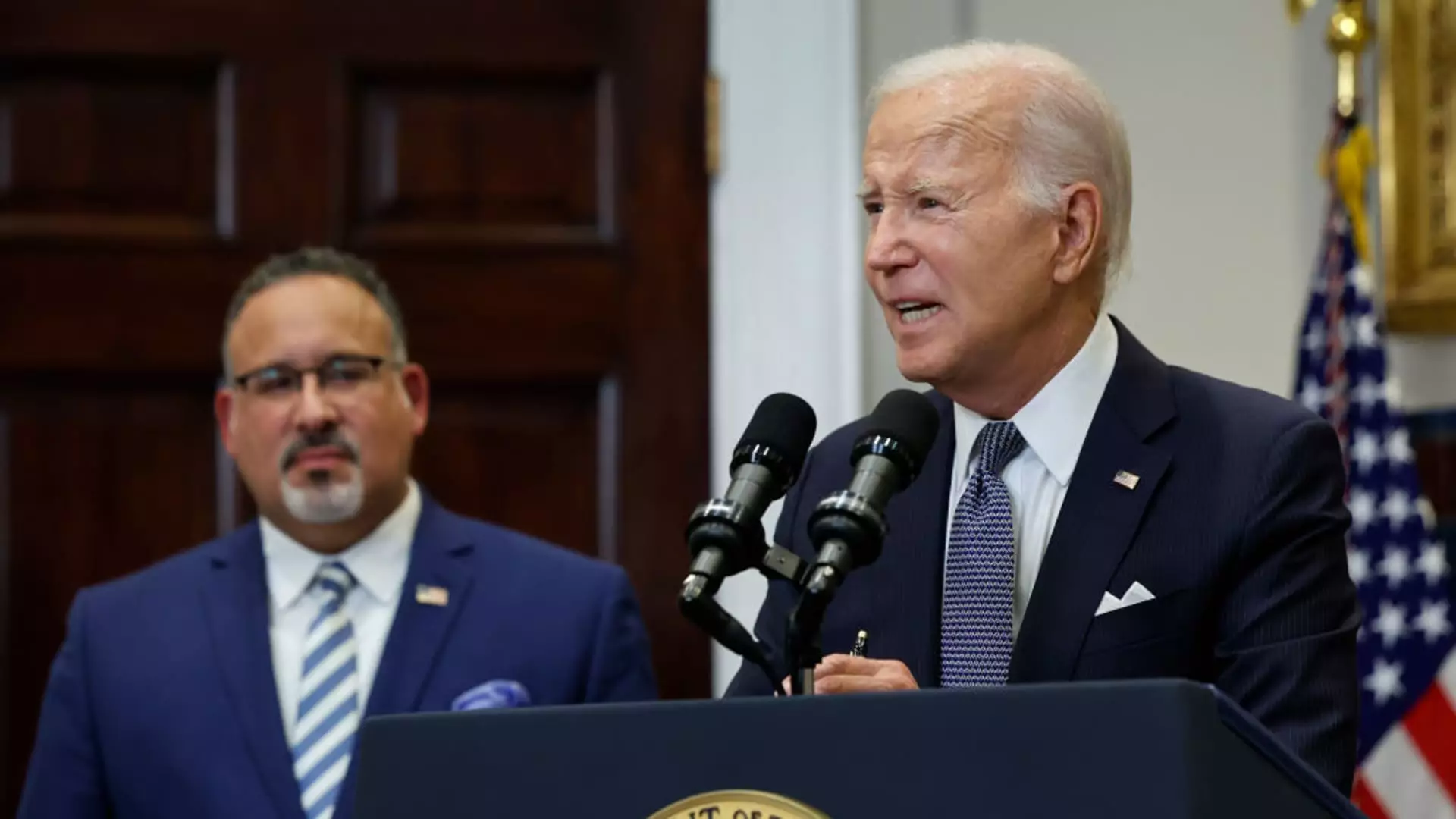The resumption of collection activities on federal student loans represents a significant policy decision that could affect millions of borrowers, especially those already facing the distress of default. With a considerable number of individuals—approximately 7.5 million—currently in default, the U.S. Department of Education is preparing to reinstitute aggressive collection methods such as wage garnishment and Social Security benefit offsets. This article delves into the implications of these changes, the strategies outlined in the recent departmental memo, and their potential impacts on student loan borrowers in the coming year.
The state of student loan defaults has been alarming, drawing comparisons to the mortgage crisis of 2008. By late 2024, although a reduction in the number of borrowers in default was noted, the figure still stands at around 5.5 million. The Biden administration has implemented various measures to ease the burdens of repayment for borrowers, particularly after a pandemic-induced pause that lasted well over three years. As the suspension of loan payments ended in September 2023, the transition back to repayment modes becomes critical and fraught with challenges.
The new memo from U.S. Undersecretary of Education James Kvaal indicates that by October of the current year, wage garnishments for those on default might begin, with Social Security offsets potentially resuming even sooner. These restored collection activities suggest a shift back to stricter enforcement practices aimed at reeling in borrowers who have been delinquent on their loans. This decision could potentially exacerbate financial distress among those struggling to make ends meet, leading to a cycle of additional economic hardship as they face garnished wages or reduced benefits.
In light of the anticipated defaults, the Department of Education aims to restore and improve initiatives designed to help borrowers remain compliant with their repayment obligations. One notable action taken is the introduction of an “on-ramp” to repayment, allowing borrowers a temporary reprieve from penalties while they adjust from the long hiatus of non-payment. This concept embodied a compassionate approach to manage the transition; however, it has also raised concerns about borrowers’ readiness to recommence payments effectively.
The memo outlines proactive steps intended to enhance borrowers’ access to affordable repayment plans. For example, the authorization of the IRS to share income information of borrowers aims to simplify the process of enrolling in income-driven repayment (IDR) plans, where payments adjust based on income rather than fixed monthly sums. This is a positive development, as such plans can provide significant relief, especially if borrowers qualify for minimal payments or even $0 monthly obligations based on their income.
Furthermore, the initiative to identify borrowers eligible for forgiveness before defaulting is notable. These measures indicate a strategic pivot towards prevention rather than merely punitive actions post-default. Experts in higher education policy, like Mark Kantrowitz, highlight this approach as innovative and essential, suggesting that such screenings should be a standard procedure across the board for all borrowers, not just those on the brink of default.
Despite the outlined plans, uncertainties loom regarding the implementation and sustainability of these policies, particularly with the anticipated transition in administration. Experts argue that many proposed measures may face scrutiny and could be rescinded, especially during the political transition surrounding Inauguration Day. This geopolitical shadow raises concerns about the stability of support systems for borrowers and the continuity of repayment programs.
Moreover, the memo hints at incentivizing borrowers to enroll in automatic payment plans by offering a reduction in interest rates—currently set at 0.25 percentage points. While this strategy could entice more borrowers to enroll, the effectiveness hinges significantly on borrowers’ broader financial situations and their ability to commit to consistent monthly payments—a feat not attainable for many.
In addition, the projected increase in the protection of Social Security benefits from garnishments indicates a move towards safeguarding vulnerable populations. The intention is clear: protect those who rely heavily on Social Security by raising the threshold for what is exempt from offsets. Still, given the myriad uncertainties surrounding federal loan policies, it is crucial for all stakeholders to remain vigilant and adaptable.
As the federal student loan landscape evolves, the impending resumption of collections necessitates a thoughtful discussion on the balance between accountability and support for borrowers. The initiatives proposed by the Department of Education illustrate a recognition of the challenges faced by millions, yet the specters of policy change and uncertainty remain.
Ultimately, addressing the student loan crisis requires a more holistic approach—one that prioritizes not only the restoration of payments but also proactive support and comprehensive financial education. Without such measures, the potential for exacerbating economic distress among borrowers looms large, underscoring the need for endurance in the pursuit of more sustainable student loan reform policies.

